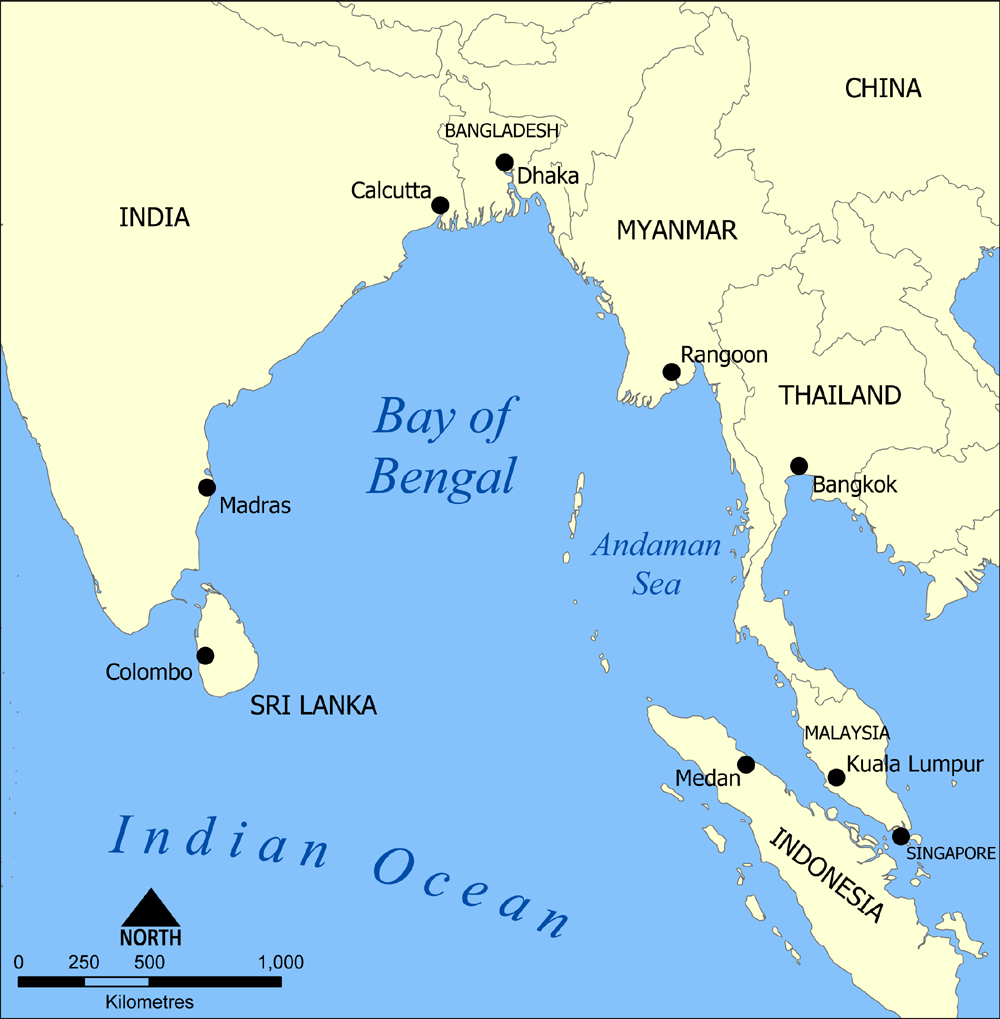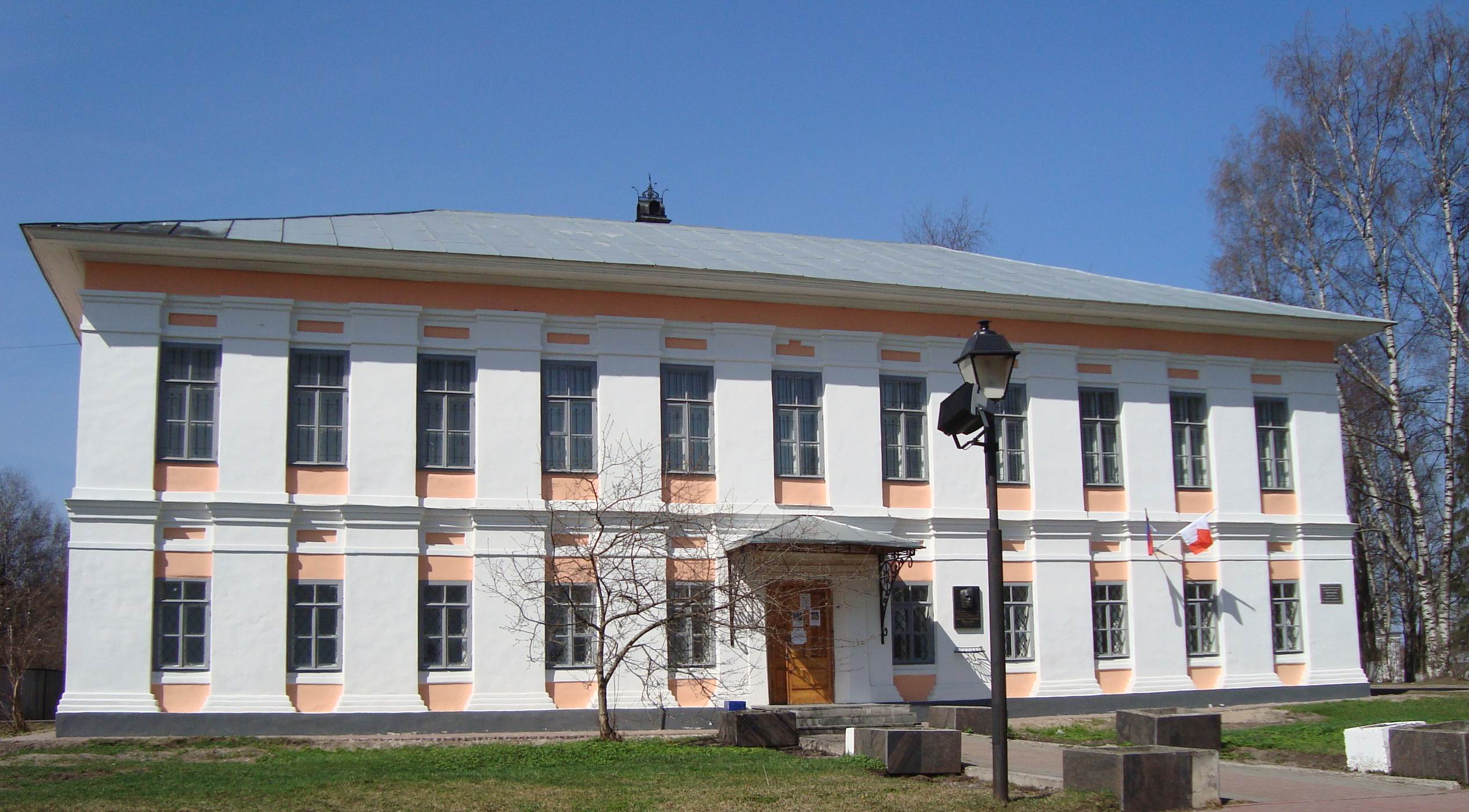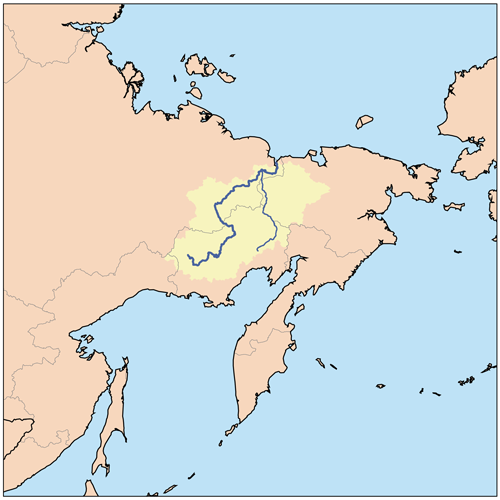|
Nagayevo Bay
Nagaev Bay or Nagayev Bay (russian: Бухта Нагаева, Нагаевская бухта), also known as Nagayeva Bay, is a bay within Taui Bay in the northern part of the Sea of Okhotsk, Magadan Oblast, Russia. Geography It is 6.4 km (4 mi) wide at its entrance and 14.5 km (9 mi) long.United States. (1918). ''Asiatic Pilot, Volume 1: East coast of Siberia, Sakhalin Island and Chosen''. Washington: Hydrographic Office. The city of Magadan with its port (formerly Nagaevo port) is located at the head of the bay. Ice occurs in the bay from the end of November to the middle of June. It was named after Russian hydrographer, admiral Alexey Nagaev.''Great Soviet Encyclopedia''Entry on Nagayeva Bay It has been described as the best mooring place in the Sea of Okhotsk. History Between 1852 and 1869, American whaleships anchored in Nagayeva Bay to obtain wood and water and boil oil. They called it Jeannette Harbor, after the ship ''Jeannette'' (), of New Bedford, which frequented T ... [...More Info...] [...Related Items...] OR: [Wikipedia] [Google] [Baidu] |
Arctic
The Arctic ( or ) is a polar regions of Earth, polar region located at the northernmost part of Earth. The Arctic consists of the Arctic Ocean, adjacent seas, and parts of Canada (Yukon, Northwest Territories, Nunavut), Danish Realm (Greenland), Finland, Iceland, Norway, Russia (Murmansk Oblast, Murmansk, Siberia, Nenets Autonomous Okrug, Nenets Okrug, Novaya Zemlya), Sweden and the United States (Alaska). Land within the Arctic region has seasonally varying snow and sea ice, ice cover, with predominantly treeless permafrost (permanently frozen underground ice) containing tundra. Arctic seas contain seasonal sea ice in many places. The Arctic region is a unique area among Earth's ecosystems. The cultures in the region and the Arctic indigenous peoples have adapted to its cold and extreme conditions. Life in the Arctic includes zooplankton and phytoplankton, fish and marine mammals, birds, land animals, plants and human societies. Arctic land is bordered by the subarctic. De ... [...More Info...] [...Related Items...] OR: [Wikipedia] [Google] [Baidu] |
Whale Oil
Whale oil is oil obtained from the blubber of whales. Whale oil from the bowhead whale was sometimes known as train oil, which comes from the Dutch word ''traan'' ("tears, tear" or "drop"). Sperm oil, a special kind of oil obtained from the head cavities of sperm whales, differs chemically from ordinary whale oil: it is composed mostly of liquid wax. Its properties and applications differ from those of regular whale oil, and it was sold for a higher price. Source and use Emerging industrial societies used whale oil in oil lamps and to Soap#History, make soap. In the 20th century it was made into margarine. With the commercial development of the petroleum industry and vegetable oils, the use of whale oils declined considerably from its peak in the 19th century into the 20th century. This is said to have saved whales from extinction. In the 21st century, with most countries having banned whaling, the sale and use of whale oil has practically ceased. Whale oil was obtained by ... [...More Info...] [...Related Items...] OR: [Wikipedia] [Google] [Baidu] |
Pacific Coast Of Russia
The Pacific Ocean is the largest and deepest of Earth's five oceanic divisions. It extends from the Arctic Ocean in the north to the Southern Ocean (or, depending on definition, to Antarctica) in the south, and is bounded by the continents of Asia and Oceania in the west and the Americas in the east. At in area (as defined with a southern Antarctic border), this largest division of the World Ocean—and, in turn, the hydrosphere—covers about 46% of Earth's water surface and about 32% of its total surface area, larger than Earth's entire land area combined .Pacific Ocean . '' Britannica Concise.'' 2008: Encyclopædia Britannica, Inc. The centers of both the |
Bays Of Magadan Oblast
A bay is a recessed, coastal body of water that directly connects to a larger main body of water, such as an ocean, a lake, or another bay. A large bay is usually called a gulf, sea, sound, or bight. A cove is a small, circular bay with a narrow entrance. A fjord is an elongated bay formed by glacial action. A bay can be the estuary of a river, such as the Chesapeake Bay, an estuary of the Susquehanna River. Bays may also be nested within each other; for example, James Bay is an arm of Hudson Bay in northeastern Canada. Some large bays, such as the Bay of Bengal and Hudson Bay, have varied marine geology. The land surrounding a bay often reduces the strength of winds and blocks waves. Bays may have as wide a variety of shoreline characteristics as other shorelines. In some cases, bays have beaches, which "are usually characterized by a steep upper foreshore with a broad, flat fronting terrace".Maurice Schwartz, ''Encyclopedia of Coastal Science'' (2006), p. 129. Bays were sig ... [...More Info...] [...Related Items...] OR: [Wikipedia] [Google] [Baidu] |
Bays Of The Sea Of Okhotsk
A bay is a recessed, coastal body of water that directly connects to a larger main body of water, such as an ocean, a lake, or another bay. A large bay is usually called a gulf, sea, sound, or bight. A cove is a small, circular bay with a narrow entrance. A fjord is an elongated bay formed by glacial action. A bay can be the estuary of a river, such as the Chesapeake Bay, an estuary of the Susquehanna River. Bays may also be nested within each other; for example, James Bay is an arm of Hudson Bay in northeastern Canada. Some large bays, such as the Bay of Bengal and Hudson Bay, have varied marine geology. The land surrounding a bay often reduces the strength of winds and blocks waves. Bays may have as wide a variety of shoreline characteristics as other shorelines. In some cases, bays have beaches, which "are usually characterized by a steep upper foreshore with a broad, flat fronting terrace".Maurice Schwartz, ''Encyclopedia of Coastal Science'' (2006), p. 129. Bays were sig ... [...More Info...] [...Related Items...] OR: [Wikipedia] [Google] [Baidu] |
Vladimir Vysotsky
Vladimir Semyonovich Vysotsky ( rus, links=no, Владимир Семёнович Высоцкий, p=vlɐˈdʲimʲɪr sʲɪˈmʲɵnəvʲɪtɕ vɨˈsotskʲɪj; 25 January 1938 – 25 July 1980), was a Soviet singer-songwriter, poet, and actor who had an immense and enduring effect on Soviet culture. He became widely known for his unique singing style and for his lyrics, which featured social and political commentary in often humorous street-jargon. He was also a prominent stage- and screen-actor. Though the official Soviet cultural establishment largely ignored his work, he was remarkably popular during his lifetime, and to this day exerts significant influence on many of Russia's musicians and actors. Biography Vladimir Vysotsky was born in Moscow at the 3rd Meshchanskaya St. (61/2) maternity hospital. His father, Semyon Volfovich (Vladimirovich) (1915–1997), was Jewish, a colonel in the Soviet army, originally from Kiev. Vladimir's mother, Nina Maksimovna, (née Sery ... [...More Info...] [...Related Items...] OR: [Wikipedia] [Google] [Baidu] |
Varlam Shalamov
Varlam Tikhonovich Shalamov (russian: Варла́м Ти́хонович Шала́мов; 18 June 1907 – 17 January 1982), baptized as Varlaam, was a Russian writer, journalist, poet and Gulag survivor. He spent much of the period from 1937 to 1951 imprisoned in forced-labor camps in the Arctic region of Kolyma, due in part to his support of Leon Trotsky and praise of writer Ivan Bunin. In 1946, near death, he became a medical assistant while still a prisoner. He remained in that role for the duration of his sentence, then for another two years after being released, until 1953. From 1954 to 1978, he wrote a set of short stories about his experiences in the labor camps, which were collected and published in six volumes, collectively known as ''Kolyma Tales''. These books were initially published in the West, in English translation, starting in the 1960s; they were eventually published in the original Russian, but only became officially available in the Soviet Union in 1987 ... [...More Info...] [...Related Items...] OR: [Wikipedia] [Google] [Baidu] |
Sevvostlag
Sevvostlag (russian: Северо-восточные исправительно-трудовые лагеря, Севвостлаг, СВИТЛ, North-Eastern Corrective Labor Camps) was a system of forced labor camps set up to satisfy the workforce requirements of the ''Dalstroy'' construction trust in the Kolyma region in April 1932. Organizationally being part of ''Dalstroy'' and under the management of the Labor and Defence Council of Sovnarkom, these camps were formally subordinated to OGPU later the NKVD directorate of the Far Eastern Krai. On March 4, 1938 Sevvostlag was resubordinated to the NKVD GULAG. In 1942 it was resubordinated back to Dalstroy. In 1949 it was renamed to the Directorate of Dalstroy Corrective Labor Camps (Управление исправительно-трудовых лагерей Дальстроя). In 1953, after the death of Joseph Stalin, with the reform of the Soviet penal system, it was again resubordinated to Gulag and later reformed into ... [...More Info...] [...Related Items...] OR: [Wikipedia] [Google] [Baidu] |
Dalstroy
Dalstroy (russian: Дальстро́й, ), also known as Far North Construction Trust, was an organization set up in 1931 in order to manage road construction and the mining of gold in the Russian Far East, including the Magadan Region, Chukotka, parts of Yakutia and parts of present-day Kamchatka Krai. Initially it was established as ''General Directorate of Construction in the Far North'' (Главное Управление строительства Дальнего Севера) under the Ministry of Internal Affairs of the Soviet Union. In 1938 it was placed under the NKVD and in 1945 it was reorganized and renamed. After the 1952 reorganization it was known as ''Main Directorate of Camps and Construction of the Far North''. Dalstroy oversaw the development and mining of the area. Over the years, Dalstroy created some 80 Gulag camps across the Kolyma region. As a result of a number of decisions, the total area covered by Dalstroy grew to three million square kilometers by ... [...More Info...] [...Related Items...] OR: [Wikipedia] [Google] [Baidu] |
Kolyma
Kolyma (russian: Колыма́, ) is a region located in the Russian Far East. It is bounded to the north by the East Siberian Sea and the Arctic Ocean, and by the Sea of Okhotsk to the south. The region gets its name from the Kolyma River and mountain system, parts of which were not accurately mapped by Russian surveyors until 1926. Today the region consists roughly of the Chukotka Autonomous Okrug and the Magadan Oblast. The area, part of which is within the Arctic Circle, has a subarctic climate with very cold winters lasting up to six months of the year. Permafrost and tundra cover a large part of the region. Average winter temperatures range from (even lower in the interior), and average summer temperatures, from . There are rich reserves of gold, silver, tin, tungsten, mercury, copper, antimony, coal, oil, and peat. Twenty-nine zones of possible oil and gas accumulation have been identified in the Sea of Okhotsk shelf. Total reserves are estimated at 3.5 billion tons ... [...More Info...] [...Related Items...] OR: [Wikipedia] [Google] [Baidu] |
Gulag
The Gulag, an acronym for , , "chief administration of the camps". The original name given to the system of camps controlled by the GPU was the Main Administration of Corrective Labor Camps (, )., name=, group= was the government agency in charge of the Soviet network of forced labour camps which were set up by order of Vladimir Lenin, reaching its peak during Joseph Stalin's rule from the 1930s to the early 1950s. English-language speakers also use the word ''gulag'' in reference to each of the forced-labor camps that existed in the Soviet Union, including the camps that existed in the post-Lenin era. The Gulag is recognized as a major instrument of political repression in the Soviet Union. The camps housed a wide range of convicts, from petty criminals to political prisoners, a large number of whom were convicted by simplified procedures, such as NKVD troikas or other instruments of extrajudicial punishment. In 1918–22, the agency was administered by the Cheka, follow ... [...More Info...] [...Related Items...] OR: [Wikipedia] [Google] [Baidu] |
New Bedford, Massachusetts
New Bedford (Massachusett language, Massachusett: ) is a city in Bristol County, Massachusetts, Bristol County, Massachusetts. It is located on the Acushnet River in what is known as the South Coast (Massachusetts), South Coast region. Up through the 17th century, the area was the territory of the Wampanoag Native American people. English colonists bought the land on which New Bedford would later be built from the Wampanoag in 1652, and the original colonial settlement that would later become the city was founded by English Quakers in the late 17th century. The town of New Bedford itself was officially incorporated in 1787. During the first half of the 19th century, New Bedford was one of the world's most important whaling ports. At its economic height during this period, New Bedford was the wealthiest city in the world per capita. New Bedford was also a Abolitionism in New Bedford, Massachusetts, center of abolitionism at this time. The city attracted many freed or escaped Afric ... [...More Info...] [...Related Items...] OR: [Wikipedia] [Google] [Baidu] |


.jpg)







